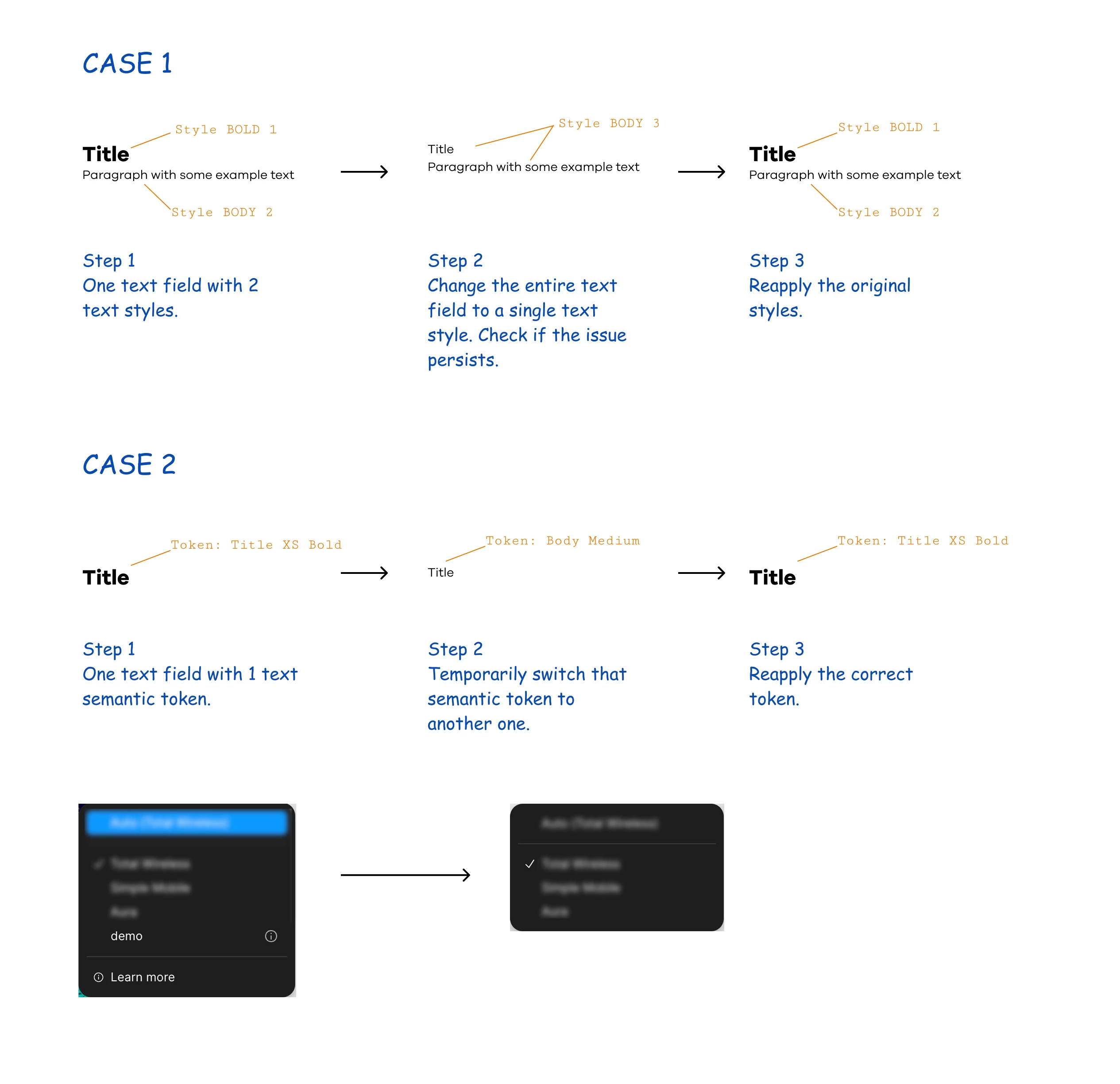There are many closed posts trying to understand why Mode conflicts happen. While the Figma team continues investigating, I believe I’ve found some clues about the root cause—and part of the solution—based on repeated testing.
Before you start
-
Make sure your libraries are exported and up to date:
-
Accept all updates in the source libraries.
-
Re-publish if anything changed.
-
In the affected file, relink/accept updates to the latest library versions.
-
How to diagnose
-
Find the component that shows the ⓘ warning when you try to switch a mode.
-
Duplicate the component, then detach the copy.
-
Work on the detached copy so you don’t lose the original.
-
Check if the conflict persists on the detached version.
-
-
If it persists, inspect layer by layer (text layers, containers, etc.) until you isolate the problematic element.
In my experience, the culprit is almost always text styles or typography tokens.
Two common cases & solutions
Case 1 — One text layer with two text styles applied
-
Step 1: You have a single text layer mixing, e.g.,
Bold 1for the title andBody 2for the paragraph. -
Step 2: Select the entire text layer and apply a single text style temporarily. Check if the conflict persists.
-
Step 3: If it’s gone, reapply the original styles (you can split into separate text layers or re-apply ranges, avoiding the initial conflict).
Case 2 — Text using direct typography tokens (no Text Style)
-
Step 1: A text layer is bound directly to a typography token (family/weight/size) without a Text Style.
-
Step 2: Temporarily switch that semantic token to a different one and check again.
-
Step 3: If the conflict clears, switch back to the correct token.
-
This “reset” often clears the stale reference that triggers the conflict.
-
Note
My working hypothesis is there’s a cached reference issue tied to fonts/styles. “Normalizing” (unifying styles or forcing a temporary swap) tends to clear it.

